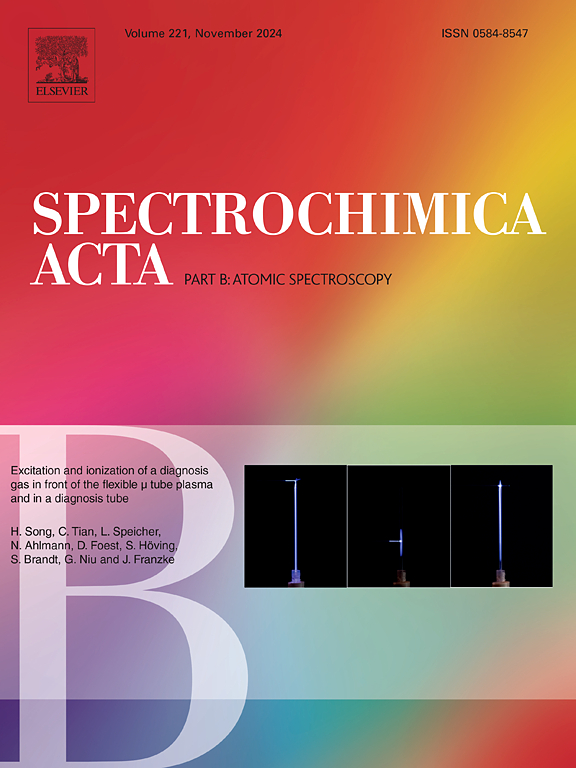Multimodal elemental analysis: A unique tool for the provenance of radiolarite artefacts
IF 3.2
2区 化学
Q1 SPECTROSCOPY
引用次数: 0
Abstract
Tracing the provenance of lithic artefacts to reconstruct the movements, territories, and social relations of Palaeolithic hunter-gatherers is an important part of modern archaeometry. To estimate the provenance of radiolarites, a type of fine-grained silica rocks, we have developed and validated a multimodal statistical approach consisting of visual examination and elemental analysis. The determination of main and trace elements with portable X-ray fluorescence (pXRF) and laser ablation inductively coupled plasma mass spectrometry (LA-ICP-MS) allowed us to separate Central European radiolarites into one of three groups of close geographical proximity or, using LA-ICP-MS and multimodal approach, into six groups, ranging from the Northern Calcareous Alps to the eastern edge of the Pieniny Klippen Belt. It emerged that the ten analysed radiolarite artefacts collected at the Nová Dědina I Aurignacian site originated from the Slovak-Polish region, thus confirming the hypothesis that Moravian (Czech Republic) Upper Palaeolithic hunter-gatherers periodically moved towards the mountainous Pieniny Klippen Belt area.

求助全文
约1分钟内获得全文
求助全文
来源期刊
CiteScore
6.10
自引率
12.10%
发文量
173
审稿时长
81 days
期刊介绍:
Spectrochimica Acta Part B: Atomic Spectroscopy, is intended for the rapid publication of both original work and reviews in the following fields:
Atomic Emission (AES), Atomic Absorption (AAS) and Atomic Fluorescence (AFS) spectroscopy;
Mass Spectrometry (MS) for inorganic analysis covering Spark Source (SS-MS), Inductively Coupled Plasma (ICP-MS), Glow Discharge (GD-MS), and Secondary Ion Mass Spectrometry (SIMS).
Laser induced atomic spectroscopy for inorganic analysis, including non-linear optical laser spectroscopy, covering Laser Enhanced Ionization (LEI), Laser Induced Fluorescence (LIF), Resonance Ionization Spectroscopy (RIS) and Resonance Ionization Mass Spectrometry (RIMS); Laser Induced Breakdown Spectroscopy (LIBS); Cavity Ringdown Spectroscopy (CRDS), Laser Ablation Inductively Coupled Plasma Atomic Emission Spectroscopy (LA-ICP-AES) and Laser Ablation Inductively Coupled Plasma Mass Spectrometry (LA-ICP-MS).
X-ray spectrometry, X-ray Optics and Microanalysis, including X-ray fluorescence spectrometry (XRF) and related techniques, in particular Total-reflection X-ray Fluorescence Spectrometry (TXRF), and Synchrotron Radiation-excited Total reflection XRF (SR-TXRF).
Manuscripts dealing with (i) fundamentals, (ii) methodology development, (iii)instrumentation, and (iv) applications, can be submitted for publication.

 求助内容:
求助内容: 应助结果提醒方式:
应助结果提醒方式:


